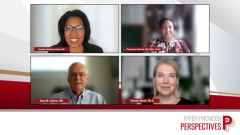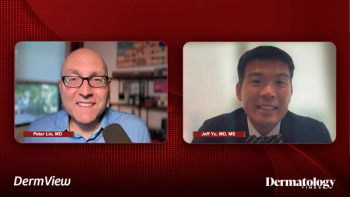
Socioeconomic Impact of Vitiligo
Renata Block, PA-C, analyzes a study on how vitiligo affects different socioeconomic groups disproportionately.
Episodes in this series

Heather Woolery-Lloyd, MD: Talking about studies, I know that vitiligo affects different socioeconomic groups disproportionately. There was a study that looked at that. Renata, can you expand on the results from that study looking at the incidence of vitiligo and different socioeconomic groups?
Renata Block, PA-C: Yeah. Not surprisingly. I’m glad this was published. I think it’s important to bring this to the forefront of how important it is to include all races, all skin of color in research. The study, published in November 2022 by JAD [Journal of Affective Disorders], aimed to describe patterns of vitiligo diagnosis in groups historically underrepresented in medical research. Skin of color such as Black, Hispanic, and other Fitzpatrick [skin phototypes] had a higher adjusted odds of vitiligo diagnosis compared [with white skin]. Higher odds were surprisingly shown in people over the age of 65. They’re thinking that’s attributed to them getting insurance [through] Medicare vs the people under that age in these socioeconomic groups who can’t afford insurance or do not have insurance. I think it’s something that is reflected in our practice on a daily basis. I’m going to give you some percentages from the study, which I thought were very enlightening and [home] in on what we see in the practice. Rates of vitiligo for [White people] were at 27% as compared [with] 34% for [Black people] and African Americans, and 47% for Hispanics. Less than 65, 27%, compared [with] 49% over the age of 65. The discrepancy is likely attributable to the underdiagnosis of vitiligo as well as the lower diagnosis in people who don’t have insurance. The other issue, and I just want to take it to the next level, is it easier to diagnose people in skin of color vs somebody who has a lighter complexion? It’s easier to see. I thought it was very interesting and enlightening.
Heather Woolery-Lloyd, MD:That is so interesting. It shows us how if you’re uninsured or underinsured, you’re less likely to be diagnosed with the skin condition just by the virtue of being uninsured or underinsured. That was a really interesting study. I’m excited, as I mentioned, to see all of this new research on vitiligo because I think we’re going to uncover some questions that we haven’t been able to answer because we haven’t looked at this disease in detail. This is interesting stuff for me.
Transcript edited for clarity.
Newsletter
Like what you’re reading? Subscribe to Dermatology Times for weekly updates on therapies, innovations, and real-world practice tips.















